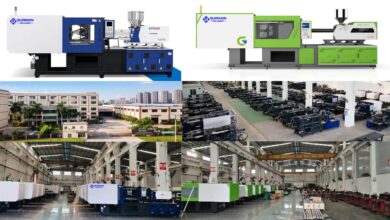Protect and accelerate your enterprise with Fortinet Siem Malaysia !

Explore Fortinet Siem Malaysia
Security information and event management, or Fortinet siem Malaysia, is described by TechTarget as “a methodology for security management that combines SIM (security information management) and SEM (security event management) operations into one security management system.”
The following three critical obstacles to prompt incident response are addressed by security information and event management systems:
It is difficult to understand what is happening and prioritise threats because of the enormous volume of unaggregated security data. Due to a lack of cybersecurity skills, IT teams are understaffed and undertrained. The requirement to demonstrate compliance reduces the time needed to identify dangers and take necessary action.
Explaining Next-Level Architecture
Organisations use Fortinet siem Malaysia systems to defend themselves against a constant stream of attacks. With the average organisation’s security operations centre (SOC) receiving over 10,000 alerts daily and the most well-known companies seeing over 150,000, most firms lack the security professionals to handle the copious notifications. However, given the heightened risk posed by more sophisticated cyber threats, disobeying alerts can be hazardous. The difference between noticing and averting a severe issue and completely missing it could be as simple as one notice. SIEM security provides a more helpful method of classifying and examining alerts. With SIEM technology, teams can manage the deluge of security data.
SIEM (security information and event management) systems gather logs and analyse security events and other data to assist compliance, hasten threat detection, and manage security incidents and events. A SIEM technology system gathers data from several sources to enable a faster response to threats. If an anomaly is found, it may collect further data, send out a warning, or quarantine an asset.
Enterprises and publicly listed firms used SIEM technology to demonstrate compliance, but they’ve since realised how beneficial it is to use security information and event management. Since then, SIEM solutions have evolved into a vital resource for identifying threats in businesses of all sizes. Security information event management that can swiftly and automatically detect breaches and other security issues is essential, given the sophistication of today’s attacks and the ongoing lack of cybersecurity specialists. Due to SIEM features, more small and medium-sized businesses are using a security and event management system.
Why SIEM: Key Advantages
Security information and event management platforms provide:
- Essential threat-detection capabilities.
- Real-time reporting.
- Compliance tools.
- Long-term log analysis.
The main advantages are:
- faster threat response times and enhanced security performance. The effectiveness of event management and security solutions depends on their ability to “allow an analyst to discover and respond to suspect behaviour patterns faster and more effectively than would be feasible by looking at data from individual systems.” It must have the ability to prevent successful breaches from having real impact.
- effective compliance demonstration. The use of SIEM technology by IT teams should make it easier to track and report adherence to regulatory, industry, and security standards.
- significant loss in simplicity Consolidating security event data from numerous apps and devices enables quick and detailed analysis. Additionally, repetitive tasks are automated, enabling workers with less experience to carry out formerly specialised tasks.
SIEM Vendor Selection: Your Buying Guide
According to a recent SIEM research by Research and Markets, “the global security information and event management market accounted for $2.59B in 2018 and is predicted to increase at a CAGR of 10.4% during the forecast period 2019 – 2027, reaching $6.24B by 2027.”
Knowing what to look for in security information and event management solution is critical because this quickly expanding sector fuels fierce competition. A SIEM system must be able to, at the very least:
- Gather information from all security devices.
- Data should be combined, correlated, and analysed.
- wherever possible, automate
- Observe business services rather than merely devices
Most enterprises will need more from security information and event management than just the bare minimum of capability. The checklist below offers suggestions for particular qualities that will optimise return on investment (ROI):
Interoperability with current security and network architectures without disruption
An element of the security information and event management system must integrate smoothly, regardless of whether the security architecture is built on the Fortinet Security Fabric or a multi-vendor environment. It has to be able to automatically find and gather information from different IT and security devices, including those that are sector- or location-specific. It must be quickly deployable and easily adjustable without requiring extensive specialised services. The solution must also be scalable to support corporate expansion.
Prioritised, high-quality alerts
Even pooled data is meaningless in the absence of correlation and event analysis. The SIEM system must employ several approaches to decide what inferences to make from the data. An intelligent infrastructure and application discovery engine dynamically map the topology of physical and virtual infrastructure on-premises and in public and private clouds, giving context for event analysis. Doing this removes the chance of errors and unnecessary work from manually entering this information.
A top SIEM solution will also link users’ identities to their network (IP) addresses and gadgets. Identifying threats that necessitate prompt action makes threat prioritisation possible through the event context, strong rule sets, and cutting-edge analytics. Administrators can quickly handle high-risk events, while automated response mechanisms control low-risk ones.
Incident mitigation automation
The best SIEM systems integrate security orchestration automation and response to synchronise the necessary reaction via several security devices from diverse manufacturers (SOAR). Depending on how complicated and risky the issue is, it may either take action automatically or notify a human operator. Due to this flexibility, businesses may strike the ideal balance between reaction speed and human supervision in the face of increasing security data quantities and dangers.
Business insights of exceptional value from a single pane of glass
Conventional security information and event management technologies rarely communicate event information in a business context. But it’s important to note that this is helpful. Instead of displaying the condition of the individual servers, networking devices, and security systems that support the company’s e-commerce business, a SIEM dashboard, for instance, may be configured to show the health of the service overall. The security team can provide the lines of business with valuable updates as a consequence.
On the other hand, security administrators can immediately ascertain which business functions would be harmed if a particular device were down or compromised. From a single dashboard, one person must be able to manage all security information and event-related tasks.
Ready for compliance reporting
Security teams that have also taken on compliance responsibilities benefit from a system with pre-defined reports covering compliance auditing and management needs, such as PCI-DSS, HIPAA, SOX, NERC, FISMA, ISO, GLBA, GPG13, and SANS Critical Controls. Security teams may expedite compliance training and save time by using SIEM. Meeting reporting and audit deadlines without having to become an expert in every applicable legislation is another benefit.
Article posted at Headmull.com



